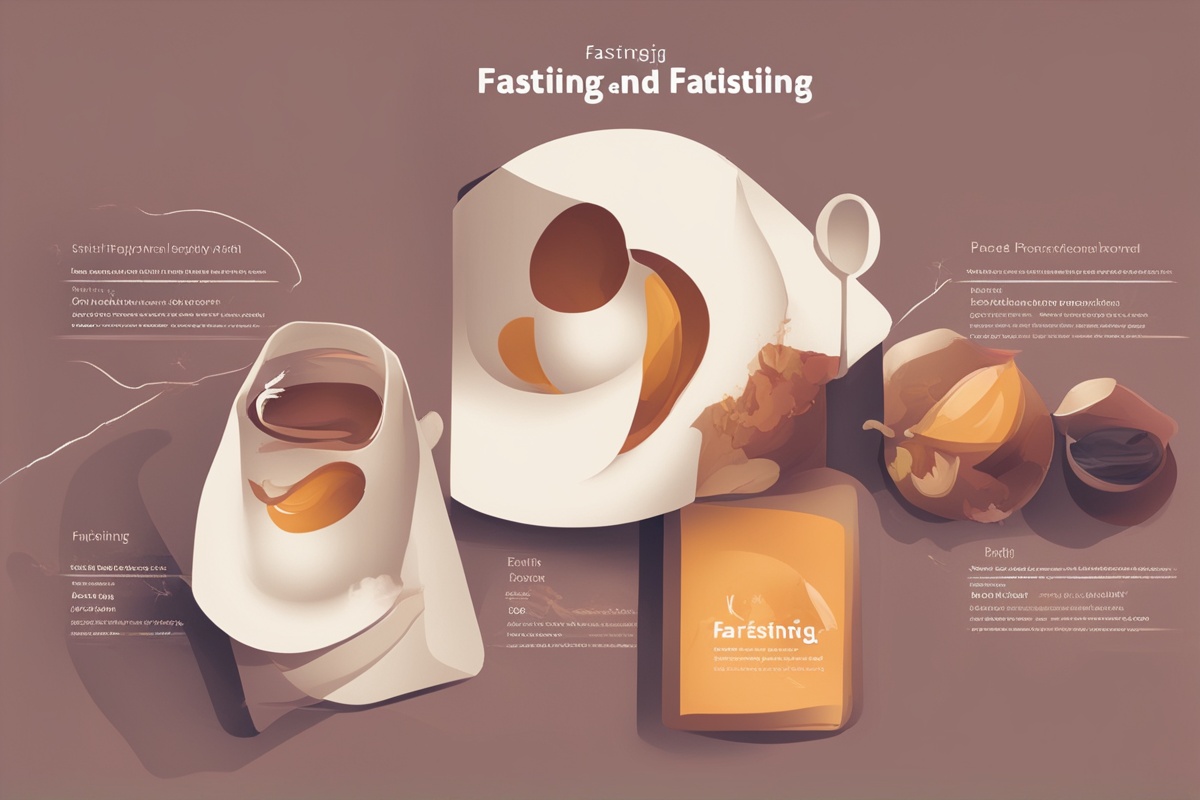Hey there, fellow health enthusiasts and busy professionals! If you’ve ever wondered how fasting can fit into a demanding work schedule, you’re in the right place. Fasting, a practice rooted in ancient traditions, has gained modern traction for its incredible health perks—often referred to as fasting benefits. But can it really coexist with the hustle of deadlines, meetings, and endless to-do lists? Absolutely! In this deep dive, we’ll explore how fasting can enhance your physical and mental well-being while supporting productivity at work. I’ll share practical tips, science-backed insights, and personal anecdotes to help you navigate this journey. Let’s unpack how fasting and work can harmonize for a healthier, sharper you.
What Are the Core Fasting Benefits for Health and Productivity?
Fasting isn’t just about skipping meals; it’s a strategic approach to eating that can yield powerful results for both body and mind. One of the most celebrated fasting benefits is improved metabolic health. Intermittent fasting (IF), for instance, where you cycle between eating and fasting periods, has been shown to enhance insulin sensitivity and support weight management (Patterson & Sears, 2017). This means more stable energy levels during work hours—no more mid-afternoon crashes after a heavy lunch! Additionally, fasting can promote autophagy, a cellular cleanup process that may reduce inflammation and bolster overall wellness (Mattson et al., 2017). For professionals, this translates to fewer sick days and better resilience against stress.
Beyond physical health, fasting also sharpens mental clarity. Ever felt that post-meal brain fog during a critical presentation? Fasting can help by stabilizing blood sugar and reducing oxidative stress in the brain, potentially improving focus and decision-making (Mattson & Arumugam, 2018). These fasting advantages make it a game-changer for anyone juggling complex tasks or creative projects at work. Let’s dive deeper into how these benefits play out in a professional setting.
How Fasting Impacts Energy and Focus at Work
One of the standout fasting benefits for employees is sustained energy. When you fast, especially during protocols like the 16:8 method (fast for 16 hours, eat during an 8-hour window), your body shifts to burning stored fat for fuel, a process called ketosis. This can lead to steadier energy compared to the spikes and dips from frequent snacking (Anton et al., 2018). I’ve personally noticed that on fasting days, I’m less tempted to reach for sugary coffee or vending machine junk, which often leaves me sluggish. Instead, I feel alert during morning meetings and ready to tackle analytical tasks.
Focus is another area where fasting shines. Research suggests that fasting may increase levels of brain-derived neurotrophic factor (BDNF), a protein linked to cognitive function and memory (Mattson et al., 2017). For me, this means drafting reports or brainstorming ideas feels less like a chore. However, it’s not all smooth sailing—fasting can initially cause irritability or hunger pangs, especially if you’re new to it. The trick is to ease in gradually and plan your fasting window around your work rhythm, which we’ll discuss next.
Choosing the Right Fasting Schedule for Your Work Life
Not all fasting styles suit every career or lifestyle. If you’re in a high-energy job like teaching or construction, or if you’re glued to a desk with back-to-back Zoom calls, your fasting plan needs to align with your daily demands. The beauty of fasting is its flexibility, and finding the right schedule can maximize those fasting health benefits without derailing your productivity. Here are a few approaches to consider:
- 16:8 Intermittent Fasting: Fast for 16 hours overnight and eat during an 8-hour window (e.g., noon to 8 p.m.). Great for office workers who can skip breakfast and power through mornings with black coffee or water.
- 5:2 Method: Eat normally for five days a week and restrict calories (500–600) on two non-consecutive days. Ideal for those with unpredictable schedules who need flexibility.
- Alternate-Day Fasting: Alternate between regular eating days and fasting or low-calorie days. Better for seasoned fasters with less physically demanding roles.
- Time-Restricted Eating: Similar to 16:8 but with a shorter eating window (e.g., 10 hours). Works well if you prefer earlier meals and have evening commitments.
I started with 16:8 because it fit my 9-to-5 routine—skipping breakfast wasn’t a big deal, and I could enjoy a hearty lunch with colleagues. Experiment with what feels sustainable for you, and don’t hesitate to tweak your approach based on how your body and work schedule respond.
Practical Tips for Fasting While Working
Let’s get real—fasting at work isn’t always easy. Hunger can sneak up during a long meeting, or you might feel tempted by the office donut stash. But with a little planning, you can reap the fasting benefits for productivity without feeling deprived. Here are some actionable strategies I’ve learned through trial and error, tailored for busy professionals:
- Stay Hydrated: Drink plenty of water, herbal tea, or black coffee during fasting windows. Dehydration can mimic hunger and sap your energy, so keep a bottle at your desk.
- Time Your Breaks: If possible, schedule your eating window around lunch or post-work hours to avoid feeling out of sync with coworkers’ meal times.
- Keep Busy: Distract yourself from hunger by diving into engaging tasks or taking short walks during breaks—physical activity can curb appetite.
- Prepare Nutrient-Dense Meals: When you do eat, prioritize protein, healthy fats, and fiber to stay full longer. Think grilled chicken salads or avocado toast over empty carbs.
- Communicate if Needed: If fasting affects your mood or energy early on, let close teammates know you’re trying a new health routine—they’ll likely be supportive.
Remember, fasting isn’t about starvation; it’s about intentional timing. If you feel lightheaded or overly fatigued, listen to your body and break your fast. Health always comes first, especially when you’ve got work responsibilities to manage.
Addressing Common Challenges of Fasting at Work
While the fasting benefits are enticing, integrating this practice into a work environment comes with hurdles. Social eating is a big one—think client lunches or team-building dinners. I’ve been there, awkwardly sipping water while everyone else digs into pizza. My workaround? Politely explain you’re following a health plan, or plan your eating window to include such events when possible. If that’s not an option, focus on small, mindful portions to stay aligned with your goals.
Another challenge is initial fatigue or “hanger” (hunger + anger). Studies note that the body adapts to fasting over time, with side effects diminishing after a few weeks (Johnstone, 2015). Until then, keep low-stress tasks on hand for fasting days, and avoid scheduling critical deadlines during your adjustment period. Lastly, if your job is physically demanding, consult a healthcare provider before fasting—safety is non-negotiable, and you might need a modified approach to avoid energy deficits (Anton et al., 2018).
Long-Term Fasting Benefits for Career and Well-Being
Sticking with fasting over the long haul can transform not just your health but your entire approach to work. The cumulative fasting wellness benefits include reduced risk of chronic conditions like type 2 diabetes and heart disease, which means fewer health-related interruptions to your career (Patterson & Sears, 2017). Mentally, the discipline of fasting can spill over into other areas, fostering better time management and resilience under pressure. I’ve found that saying “no” to unnecessary snacking has made me more assertive in prioritizing tasks at work, too.
Moreover, fasting encourages mindfulness about food and habits, which can enhance work-life balance. Instead of mindlessly eating at your desk, you’re more likely to savor meals and disconnect during breaks. Over time, these small shifts add up, creating a healthier, more focused version of yourself—both in and out of the office.
As we wrap up, it’s clear that fasting and work can indeed go hand in hand when approached thoughtfully. The fasting benefits—from boosted energy and focus to long-term health gains—are well worth the initial learning curve. Whether you’re a newbie testing the waters with a 16:8 schedule or a seasoned faster refining your routine, remember to prioritize balance. Listen to your body, align your fasting windows with your work demands, and don’t shy away from seeking support if needed. By weaving fasting into your professional life, you’re not just investing in your health but also in your career’s sustainability. So, why not give it a try? Start small, stay consistent, and watch how these fasting advantages unfold for you.
References
- Anton, S. D., Moehl, K., Donahoo, W. T., Marosi, K., Lee, S. A., Mainous, A. G., … & Mattson, M. P. (2018). Flipping the metabolic switch: Understanding and applying the health benefits of fasting. Obesity, 26(2), 254-268. https://doi.org/10.1002/oby.22065
- Johnstone, A. (2015). Fasting for weight loss: An effective strategy or latest dieting trend? International Journal of Obesity, 39(5), 727-733. https://doi.org/10.1038/ijo.2014.214
- Mattson, M. P., & Arumugam, T. V. (2018). Hallmarks of brain aging: Adaptive and pathological modification by metabolic states. Cell Metabolism, 27(6), 1176-1199. https://doi.org/10.1016/j.cmet.2018.05.011
- Mattson, M. P., Longo, V. D., & Harvie, M. (2017). Impact of intermittent fasting on health and disease processes. Ageing Research Reviews, 39, 46-58. https://doi.org/10.1016/j.arr.2016.10.005
- Patterson, R. E., & Sears, D. D. (2017). Metabolic effects of intermittent fasting. Annual Review of Nutrition, 37, 371-393. https://doi.org/10.1146/annurev-nutr-071816-064634






